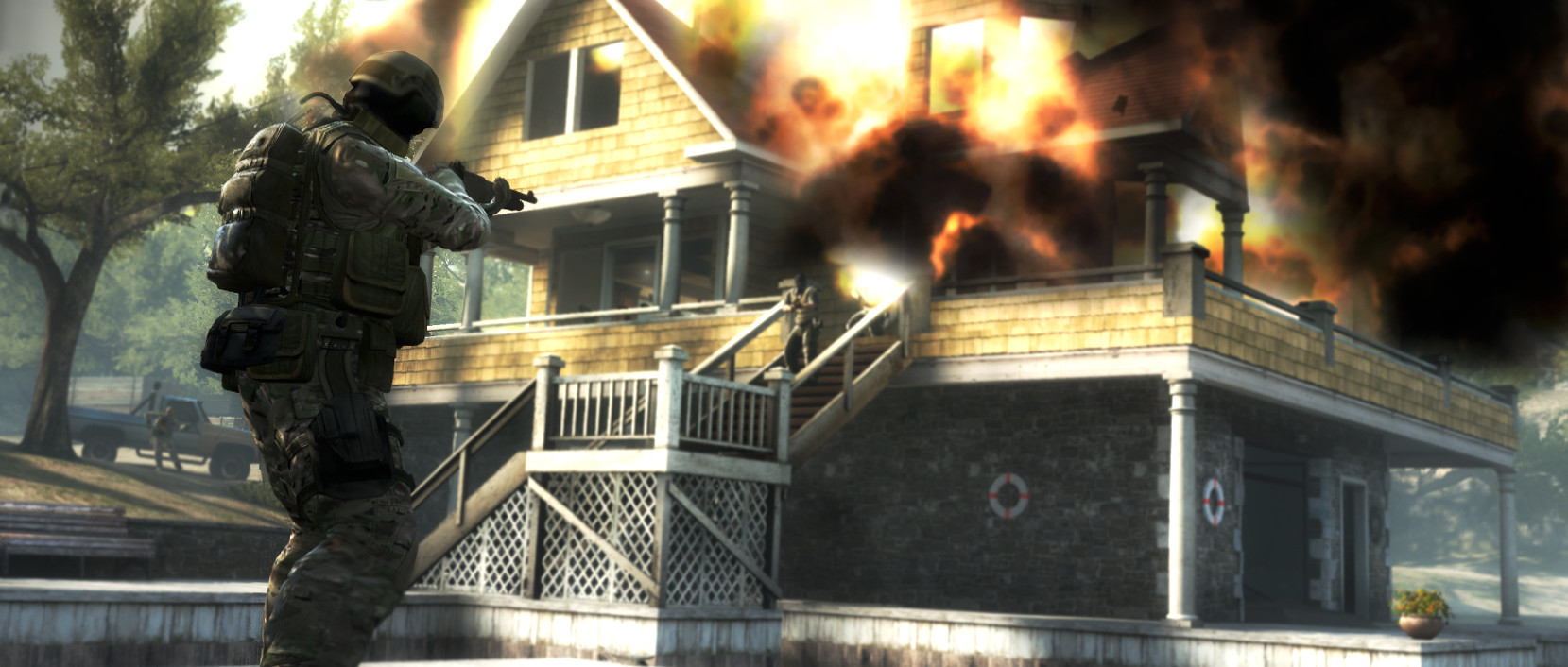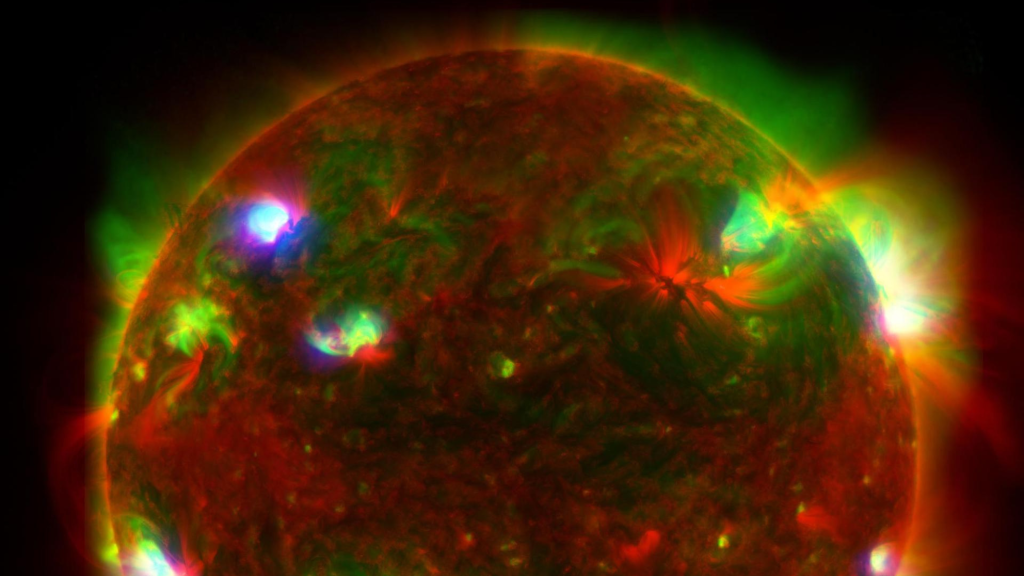In what may be one of the cleanest, and most startling promotional moves in the history of video games, Valve has announced the upcoming release of Counter-Strike 2 via three shockingly technical YouTube videos dedicated to engine updates, changes to the game’s netcode, and an overhaul of smoke physics.
Counter-Strike 2 has, somehow, managed to avoid pissing off one of the largest, and most famously hostile, player bases in the world. Counter-Strike has about1.3 million daily concurrents and with that size comes a lot of people to potentially alienate with even the most minor changes to a now two-decade-old, genre defining tactical shooter.
Videos by VICE
The actual changes coming in Counter-Strike 2 will feel ridiculous to people who have never played the game, or whose relationship with it was exclusively casual. An updated engine, minor adjustments to maps, some server-side improvements, and changes to the game’s smoke technology, may seem insignificant at first glance, but when introduced to a game with over two decades of established strategies and habits, the changes become groundbreaking.
The first, and most immediately obvious change from Counter-Strike: Global Offensive to Counter Strike 2, is the game’s engine: Source 2, the specter of which has haunted the video games industry for almost as long as jokes about the ridiculous idea of a Counter-Strike 2. Source 2 has been an engine long in development, having been initially revealed and then implemented in 2015 for the release of DOTA 2 Reborn. The engine has since been used for only a handful of projects, including 2020’s Half-Life: Alyx, Valve’s signature VR offering, while being developed internally.
Counter-Strike is a famously flat game, fundamentally favoring function over form. The flatter the world, the easier it is to identify and then click heads. That flatness is a key component in the game’s readability, which, alongside optimizing frame rate and maximizing the size of targets on screen, is why Counter-Strike is frequently played on low graphics settings and low resolution at a competitive level. Counter-Strike 2, on the other hand, leverages its fidelity to the end of readability. The game’s lighting engine and improved texture work allows for a world that can look good and still be understood at a glance.
In addition to its engine update, Counter-Strike 2 improves the original game’s server architecture. Counter-Strike’s netcode is built around ticks, which are packets of information that carry inputs from the client side to the server. Counter-Strike runs at 64 ticks per second, meaning that the server checks your input 64 times per second. As precise as this is, there are still gaps between ticks where players can make inputs, resulting in very, very slight latency.
Counter-Strike 2 introduces sub-tick position, meaning that the game doesn’t just convey your inputs to the server, but also when they actually happened. This additional piece of information allows the server and client-sides of the game to more accurately communicate with one another, reducing that little bit of potential desync.
For the vast majority of players, this change is close to meaningless. If you’re an average Counter-Strike player, 1/64th of a second is not what is going to make or break your game. However, this is a feature that has long been demanded by pros and other high-level competitive players, for whom 1/64th of a second actually matters. Even if that’s only a small fraction of Counter-Strike’s player base, streamers and pros fundamentally shape the culture of the game and a fraction of 1.3 million people a day is still tens of thousands of people, many of whom contribute significantly to Counter-Strike’s profits.
Valve knows its audience exceptionally well, and clearly understands that even if the slight latency created by Counter-Strike’s tickrate doesn’t actually affect the vast majority of players, they have come to care about it regardless. This, in addition to the game’s extremely weird, lowkey announcement, is a clear sign that Counter-Strike 2 is built for existing Counter-Strike players as much as it is a new generation of fans.
Arguably, the most significant change to most player’s experience will be the reworked smoke system—something that seems insignificant to anyone but diehard tactical shooter fans, who will immediately recognize it as a total gamechanger. Counter-Strike 2 introduces interactable, volumetric smoke, which shapes itself to the surrounding environment, responds to gunfire, and can be temporarily dispelled by grenades. Each of these changes would be significant in and of themselves, but together they totally reshape the tactical tension that drives Counter-Strike.
At a high level of play, pretty much every Counter-Strike player is an excellent shot. Technical mastery is the barrier to entry, which means that, at high level play, games are won and lost on information. Being able to predict where the attacking team is going to strike from allows defenders to hold essential angles, giving them a huge advantage—the attackers goal, then, is to strike as quickly as possible while remaining mostly undetected, or to provide misinformation through feints. Smoke grenades are the key to this information war.
In the current version of Counter-Strike, smokes are mostly static, almost orbs, which can be used to block line of sight. When used well, and with clever use of their orb-like nature, smokes can be used to create one-way sightlines in which one player can see another without risking being seen themselves. Many defensive strategies, and some offensive plans, are built around utilizing one-ways to shutdown space. Counter-Strike 2 all but eliminates one-ways by creating volumetric smoke that fills the area surrounding it naturally, and molds itself around objects in the environment.
Even if one-ways had remained available, the other essential change to smokes would’ve completely altered how they were used. The ability to punch holes in smoke with your bullets, revealing yourself in the process, or dispel smoke with a grenade, allows for smokes to be used even more aggressively. Some twitter clips have already shown this change to great effect, with players creating, and then quickly dismissing smokes to surprise their enemies from unexpected angles.
Most importantly, the changed smoke behavior allows for real counterplay against smokes, something that tactical shooters have been trying to solve for a long time. When playing against smokes in Counter-Strike or Valorant, you simply have to guess correctly whether or not your opponent actually plans to push through them, or use them to disguise other types of movement, Counter-Strike 2, by allowing players to temporarily scatter the smoke, allows for an additional variable in the information game and an additional tool in every player’s toolkit.

Perhaps the most astounding part of these changes is that the Counter-Strike community actually appears to be excited about them. The large communities surrounding competitive games, tactical shooters in particular, can be famously toxic, and Counter-Strike is no different. Players, regardless of game, are deeply resistant to change and also constantly complain about their respective game’s developers not doing enough. Counter-Strike fans, for example, have spent the last twenty three years griping about minutiae. And yet, the public response to Counter-Strike 2 has been glowing.
Not only are the changes themselves things that players have been asking for for a long time, but the method with which they’ve been delivered is all but laser targeted at the game’s existing audience. Counter-Strike 2 was not announced with a bombastic cinematic, or slick highlight reel, but three short videos explaining three different changes in excruciating detail. Valve has released the exact type of videos that professional content creators can build off of, providing b-roll and clear, in-game examples of tactical possibilities for fans to further theorize about.
Valve’s Counter-Strike 2 announcement is a master class in how to please a highly volatile, devoted fanbase, one that only took them 23 years to put together.
More
From VICE
-

Photo: Jorge Garc'a /VW Pics/Universal Images Group via Getty Images -

Three-Telescope View of the Sun. Photo: NASA -

Photo: Maria Teresa Tovar Romero / Getty Images -

Photo: grecosvet / Getty Images
